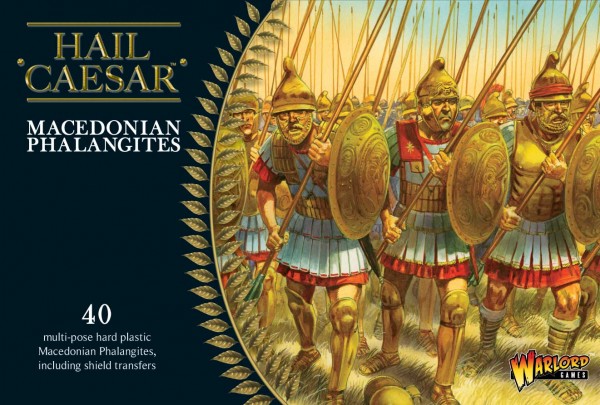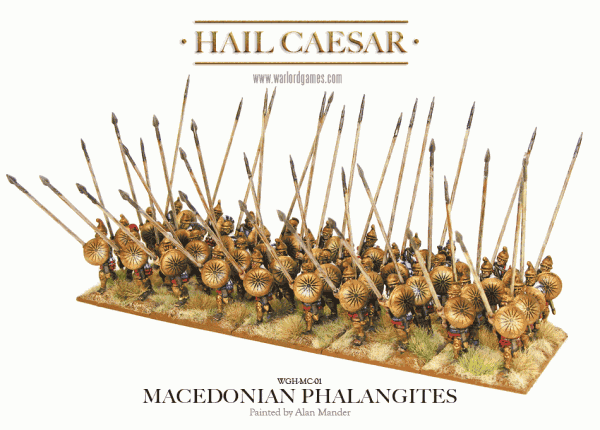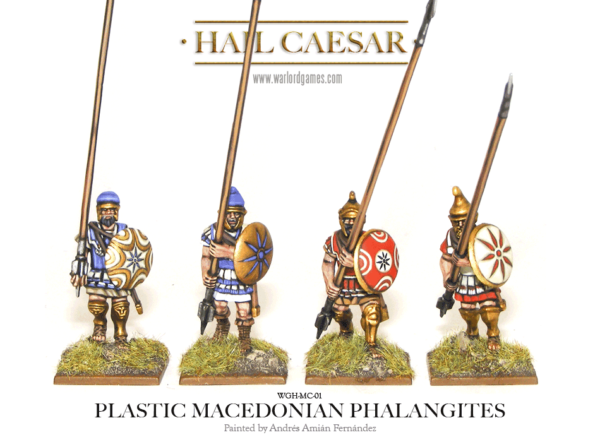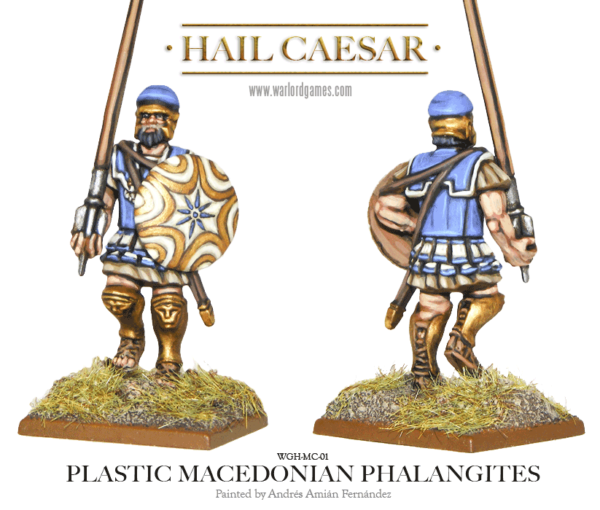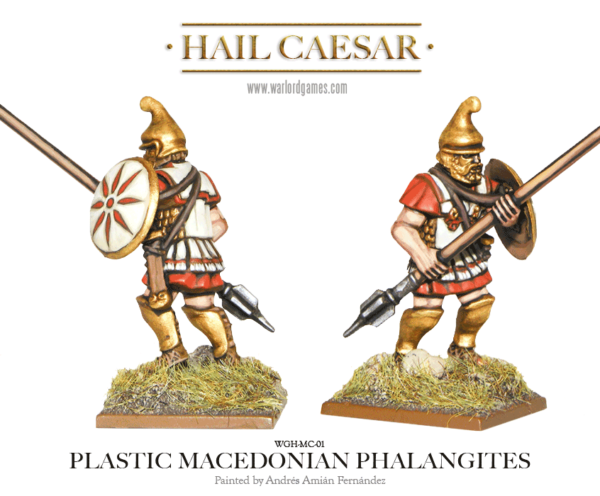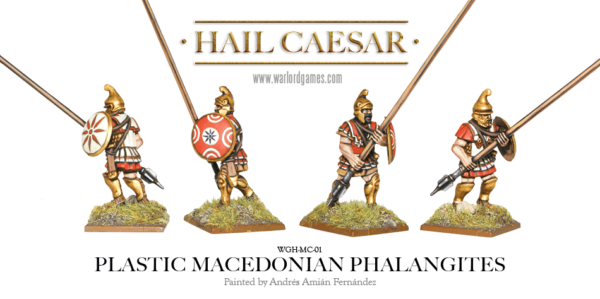One of the finest sights in wargaming are the serried ranks of pike that fill Macedonian armies (and those of several other armies in the period). Our eagerly-anticipated plastic phalangites are now here!
Philip II, father of Alexander the Great, spent much of his youth as a hostage at Thebes, where he studied under the renowned general Epaminondas, whose reforms were the basis for the phalanx. Phalangites were professional soldiers, and were among the first troops ever to be drilled, thereby allowing them to execute complex manoeuvres well beyond the reach of most other armies.
They fought packed in a close rectangular formation, typically eight men deep, with a leader at the head of each column and a secondary leader in the middle, so that the back rows could move off to the sides if more frontage was needed.
Each phalangite carried as his primary weapon a sarissa, a double-pointed pike over 6m (18 feet) in length. Before a battle the sarissa were carried in two pieces and then slid together when they were being used. At close range such large weapons were of little use, but an intact phalanx could easily keep its enemies at a distance; the weapons of the first five rows of men all projected beyond the front of the formation, so that there were more spearpoints than available targets at any given time. The secondary weapon was a short sword.
The Macedonian phalanx was not very different from the Hoplite phalanx of other Greeks states, save it was better trained, armed with the sarissa enabling it to outreach its competitors and stave off enemy cavalry, and wore far lighter armour enabling longer endurance and long fast forced marches, including the ability to sprint to close and overwhelm opposing positions and archers.
In essence, the range of their counter-weighted sarissa, allowed them superior mobility as well as superior defence and attack abilities despite the encumbrance disadvantages of the longer weapon once trained up to handling it in formation.
Centuries later, the Canton organised militia of Swiss Pikemen enjoyed similar advantages over less well trained contemporary militaries which were identically equipped, which emphasises the importance of training and unit cohesion in the scheme. In Phillip’s and Alexander’s time, the Macedonian phalanx had clear technical superiority.
The new plastic boxed set contains 40 multi-pose plastic Macedonian Phalangites and a sheet of waterslide shield transfers. The miniatures are simple to build with just an arm, head and shield to add to the main body. There are several arm and head options so you can build the regiment to your own tastes. At just £20 this provides superb value for money.

